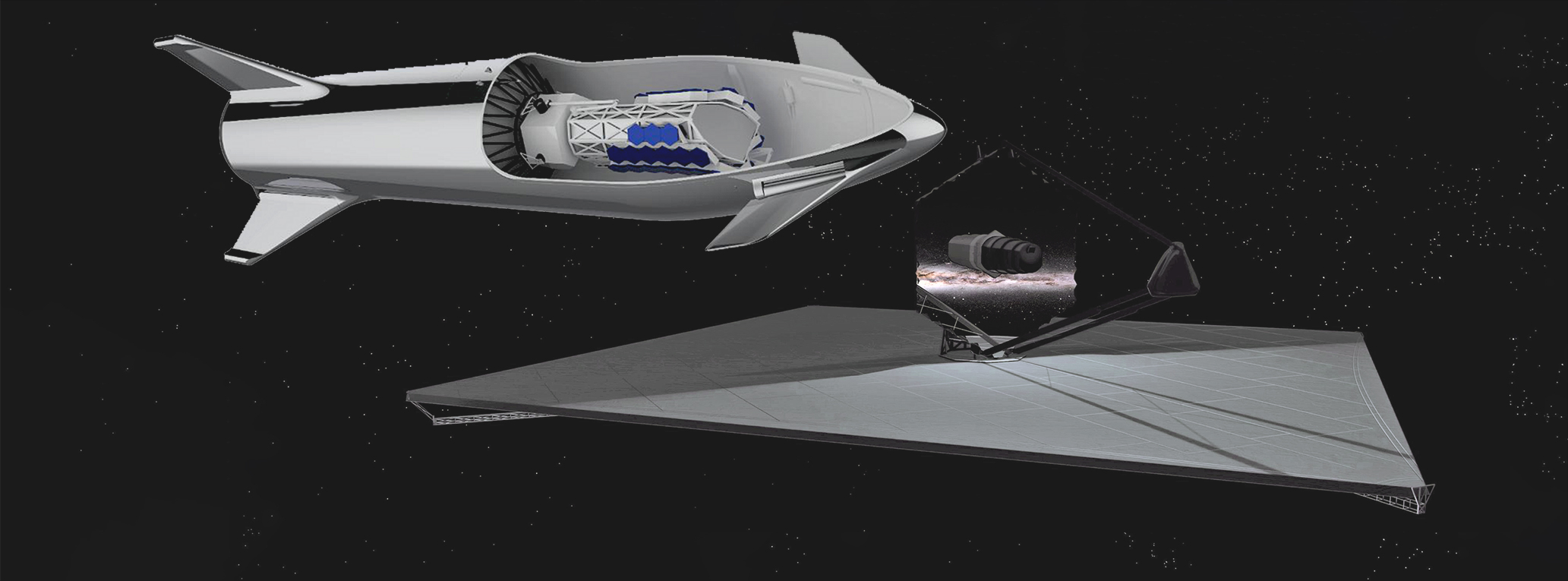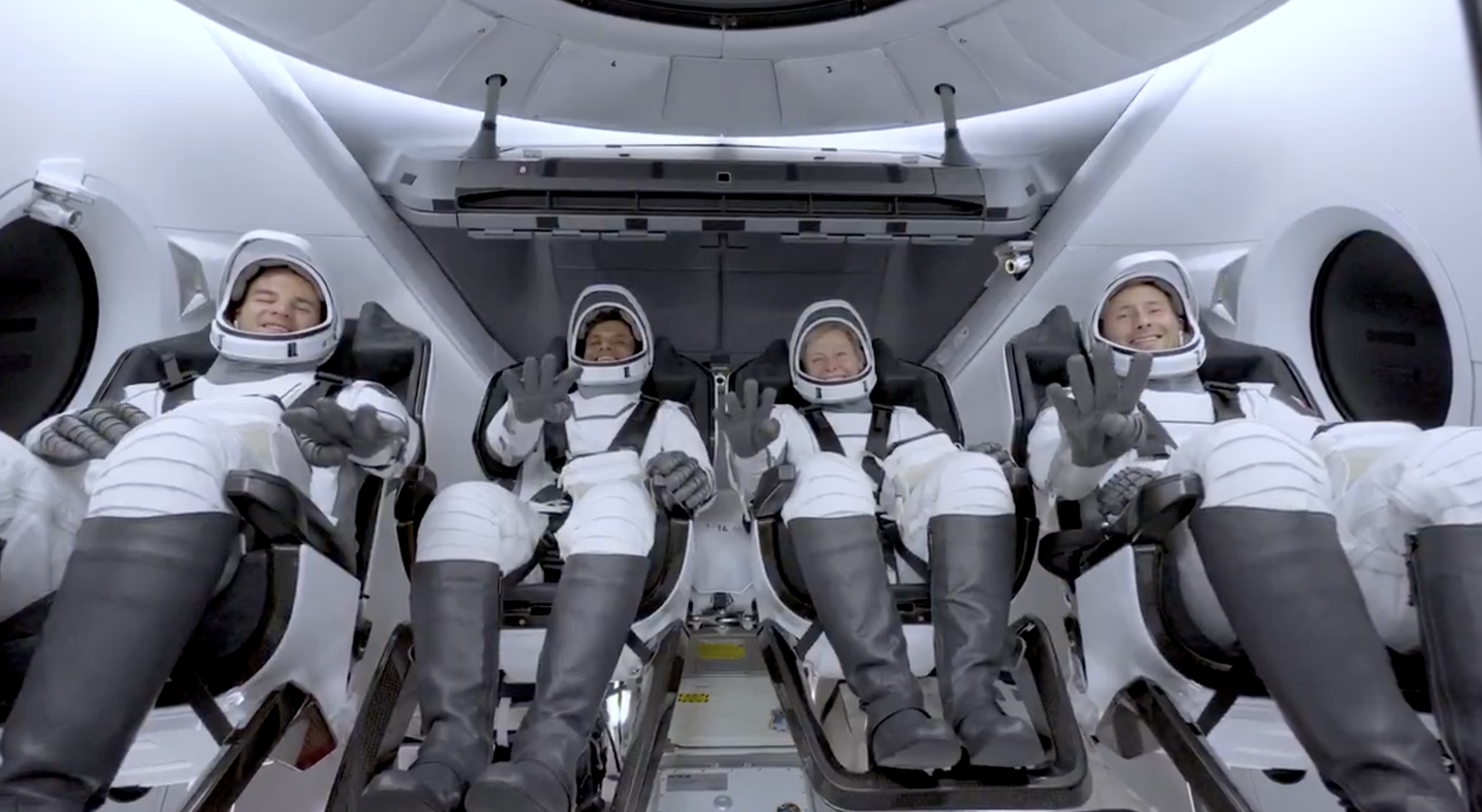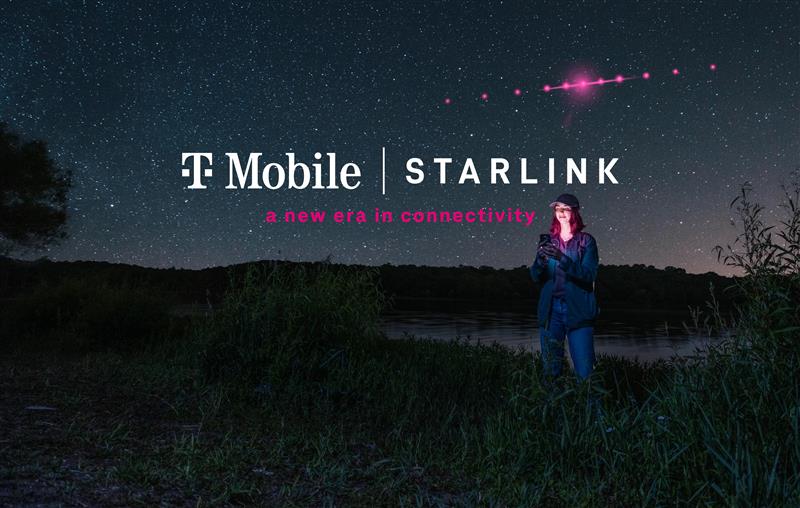

SpaceX
SpaceX’s steel Starship gets new official render, this time with a huge NASA telescope
SpaceX recently provided NASA with the third known official render of its stainless steel Starship, focused on the vehicle’s potential utility for launching massive scientific spacecraft for NASA. Starship’s only direct competition for the proposed LUVOIR telescope: NASA’s own SLS rocket.
Published by NASA’s Goddard Space Flight Center (GSFC), Starship is shown with a smaller “B” variant of the proposed LUVOIR space telescope in its payload bay. According to a scientist from the Space Telescope Science Institute (STSI), the massive LUVOIR-A variant could “barely” fit inside Starship’s clamshell bay, but the telescope could also be tweaked to more perfectly fit the constraints of its chosen launch vehicle. LUVOIR is effectively being designed as a logical follow-up to the James Webb Space Telescope (JWST) and could be ready to launch no earlier than 2039 if NASA selects the idea – one of three under consideration – for future development.
The LUVOIR telescope (shorthand for Large UV/Optical/IR Surveyor) is currently grouped into two different categories, A and B. A is a full-scale, uncompromised telescope with a vast 15-meter primary mirror and a sunshade with an area anywhere from 5000 to 20000 square meters (1-4 acres). B is a smaller take on the broadband surveyor telescope, with an 8-meter primary mirror (a quarter of the area of LUVOIR-A’s) accompanied by a similarly reduced sunshade (and price tag, presumably).
— Teslarati, July 2018
Goddard’s “we asked, SpaceX checked” statement refers to a funded analysis of LUVOIR launch options the group announced back in July 2018, at which point the future prospects of NASA’s SLS rocket were far more stable. Approximately nine months later, NASA administrator Jim Bridenstine announced that all work on future SLS upgrades – including the Block 1B and Block 2 variants that could have supported the launch of LUVOIR-A – was to be halted as soon as possible. All of that funding would instead be focused on mitigating a never-ending string of delays and pushing SLS to actually prepare for its first launches. Bridenstine has since publicly waffled on that aggressive plan, simultaneously indicating that some of those SLS upgrades (mainly an advanced upper stage, EUS) would be critical for one variant of his proposal to return astronauts to the Moon as early as 2024.
Regardless, the blood of SLS is currently in the water as NASA pursues an answer to the question of whether commercial rockets can instead be used to launch the agency’s Orion spacecraft and Lunar Gateway segments. Based on preliminary interviews focused on NASA’s internal study of the subject, there is still plenty of room for SLS as long as its contractors (namely Boeing) can stem relentless delays, cost overruns, and quality control issues and finally prepare the rocket for its first missions.
As described above, it appears likely that NASA is going to require the SLS rocket’s core stage to conduct a critical mission-duration test fire before permitting the vehicle to begin launch preparations in Florida. As a result, there will be almost no conceivable way for the rocket to rise to the 2020 launch debut challenge issued by Bridenstine, potentially meaning that NASA will put significant resources into studying and developing alternatives to SLS. If or when NASA sets the precedent for allowing serious studies and funding of SLS alternatives, the death of the rocket will almost certainly be assured. Relative to commercial rockets like Falcon Heavy, New Glenn, Vulcan Heavy, and even SpaceX’s BFR (i.e. Starship/Super Heavy), conservative estimates suggest that SLS will be no less than 5-20+ times as expensive on a per-launch basis.
Consequently, it should come as no surprise to see NASA Goddard openly confirm its willingness to launch future flagship science missions on SpaceX’s Starship vehicle, so long as the rocket is successfully developed, launched, and certified by NASA for high-value missions. Given just how distant the proposed ~2039 launch of LUVOIR is and how early SpaceX is in the process of developing Starship/Super Heavy into a highly mature and reliable launch vehicle, one should not read too far into Goddard’s public support.
However, there should be no doubt at this point that SpaceX’s next-generation Starship and current-generation Falcon Heavy rockets are already upsetting certain aspects of the status quo. If SpaceX continues to refine Starship’s design and demonstrate Falcon Heavy’s reliability and readiness, studies like Goddard’s LUVOIR launch case can be expected to crop up throughout domestic and global space industries, both pubic and private.
Check out Teslarati’s Marketplace! We offer Tesla accessories, including for the Tesla Cybertruck and Tesla Model 3.
News
SpaceX launches Ax-4 mission to the ISS with international crew
The SpaceX Falcon 9 launched Axiom’s Ax-4 mission to ISS. Ax-4 crew will conduct 60+ science experiments during a 14-day stay on the ISS.

SpaceX launched the Falcon 9 rocket kickstarting Axiom Space’s Ax-4 mission to the International Space Station (ISS). Axiom’s Ax-4 mission is led by a historic international crew and lifted off from Kennedy Space Center’s Launch Complex 39A at 2:31 a.m. ET on June 25, 2025.
The Ax-4 crew is set to dock with the ISS around 7 a.m. ET on Thursday, June 26, 2025. Axiom Space, a Houston-based commercial space company, coordinated the mission with SpaceX for transportation and NASA for ISS access, with support from the European Space Agency and the astronauts’ governments.
The Ax-4 mission marks a milestone in global space collaboration. The Ax-4 crew, commanded by U.S. astronaut Peggy Whitson, includes Shubhanshu Shukla from India as the pilot, alongside mission specialists Sławosz Uznański-Wiśniewski from Poland and Tibor Kapu from Hungary.
“The trip marks the return to human spaceflight for those countries — their first government-sponsored flights in more than 40 years,” Axiom noted.
Shukla’s participation aligns with India’s Gaganyaan program planned for 2027. He is the first Indian astronaut to visit the ISS since Rakesh Sharma in 1984.
Axiom’s Ax-4 mission marks SpaceX’s 18th human spaceflight. The mission employs a Crew Dragon capsule atop a Falcon 9 rocket, designed with a launch escape system and “two-fault tolerant” for enhanced safety. The Axiom mission faced a few delays due to weather, a Falcon 9 leak, and an ISS Zvezda module leak investigation by NASA and Roscosmos before the recent successful launch.
As the crew prepares to execute its scientific objectives, SpaceX’s Ax-4 mission paves the way for a new era of inclusive space research, inspiring future generations and solidifying collaborative ties in the cosmos. During the Ax-4 crew’s 14-day stay in the ISS, the astronauts will conduct nearly 60 experiments.
“We’ll be conducting research that spans biology, material, and physical sciences as well as technology demonstrations,” said Whitson. “We’ll also be engaging with students around the world, sharing our experience and inspiring the next generation of explorers.”
SpaceX’s Ax-4 mission highlights Axiom’s role in advancing commercial spaceflight and fostering international partnerships. The mission strengthens global space exploration efforts by enabling historic spaceflight returns for India, Poland, and Hungary.
News
Starlink Cellular’s T-Mobile service to grow with third-party app data
From Oct 2025, T-Satellite will enable third-party apps in dead zones! WhatsApp, X, AccuWeather + more coming soon.

Starlink Cellular’s T-Mobile service will expand with third-party app data support starting in October, enhancing connectivity in cellular dead zones.
T-Mobile’s T-Satellite, supported by Starlink, launches officially on July 23. Following its launch, T-Mobile’s Starlink Cellular service will enable data access for third-party apps like WhatsApp, X, Google, Apple, AccuWeather, and AllTrails on October 1, 2025.
T-Mobile’s Starlink Cellular is currently in free beta. T-Satellite will add MMS support for Android phones on July 23, with iPhone support to follow. MMS support allows users to send images and audio clips alongside texts. By October, T-Mobile will extend emergency texting to all mobile users with compatible phones, beyond just T-Mobile customers, building on its existing 911 texting capability. The carrier also provides developer tools to help app makers integrate their software with T-Satellite’s data service, with plans to grow the supported app list.
T-Mobile announced these updates during an event celebrating an Ookla award naming it the best U.S. phone network, a remarkable turnaround from its last-place ranking a decade ago.
“We not only dream about going from worst to best, we actually do it. We’re a good two years ahead of Verizon and AT&T, and I believe that lead is going to grow,” said T-Mobile’s Chief Operating Officer Srini Gopalan.
T-Mobile unveiled two promotions for its Starlink Cellular services to attract new subscribers. A free DoorDash DashPass membership, valued at $10/month, will be included with popular plans like Experience Beyond and Experience More, offering reduced delivery and service fees. Meanwhile, the Easy Upgrade promotion targets Verizon customers by paying off their phone balances and providing flagship devices like the iPhone 16, Galaxy S25, or Pixel 9.
T-Mobile’s collaboration with SpaceX’s Starlink Cellular leverages orbiting satellites to deliver connectivity where traditional networks fail, particularly in remote areas. Supporting third-party apps underscores T-Mobile’s commitment to enhancing user experiences through innovative partnerships. As T-Satellite’s capabilities grow, including broader app integration and emergency access, T-Mobile is poised to strengthen its lead in the U.S. wireless market.
By combining Starlink’s satellite technology with strategic promotions, T-Mobile is redefining mobile connectivity. The upcoming third-party app data support and official T-Satellite launch mark a significant step toward seamless communication, positioning T-Mobile as a trailblazer in next-generation wireless services.
News
Starlink expansion into Vietnam targets the healthcare sector
Starlink aims to deliver reliable internet to Vietnam’s remote clinics, enabling telehealth and data sharing.

SpaceX’s Starlink expansion into Vietnam targets its healthcare sector. Through Starlink, SpaceX seeks to drive digital transformation in Vietnam.
On June 18, a SpaceX delegation met with Vietnam’s Ministry of Health (MoH) in Hanoi. SpaceX’s delegation was led by Andrew Matlock, Director of Enterprise Sales, and the discussions focused on enhancing connectivity for hospitals and clinics in Vietnam’s remote areas.
Deputy Minister of Health (MoH) Tran Van Thuan emphasized collaboration between SpaceX and Vietnam. Tran stated: “SpaceX should cooperate with the MoH to ensure all hospitals and clinics in remote areas are connected to the StarLink satellite system and share information, plans, and the issues discussed by members of the MoH. The ministry is also ready to provide information and send staff to work with the corporation.”
The MoH assigned its Department of Science, Technology, and Training to work with SpaceX. Starlink Vietnam will also receive support from Vietnam’s Department of International Cooperation. Starlink Vietnam’s agenda includes improving internet connectivity for remote healthcare facilities, developing digital infrastructure for health examinations and remote consultations, and enhancing operational systems.
Vietnam’s health sector is prioritizing IT and digital transformation, focusing on electronic health records, data centers, and remote medical services. However, challenges persist in deploying IT solutions in remote regions, prompting Vietnam to seek partnerships like SpaceX’s.
SpaceX’s Starlink has a proven track record in healthcare. In Rwanda, its services supported 40 health centers, earning praise for improving operations. Similarly, Starlink enabled remote consultations at the UAE’s Emirati field hospital in Gaza, streamlining communication for complex medical cases. These successes highlight Starlink’s potential to transform Vietnam’s healthcare landscape.
On May 20, SpaceX met with Vietnam’s Ministry of Industry and Trade, announcing a $1.5 billion investment to provide broadband internet, particularly in remote, border, and island areas. The first phase includes building 10-15 ground stations across the country. This infrastructure will support Starlink’s healthcare initiatives by ensuring reliable connectivity.
Starlink’s expansion in Vietnam aligns with the country’s push for digital transformation, as outlined by the MoH. By leveraging its satellite internet expertise, SpaceX aims to bridge connectivity gaps, enabling advanced healthcare services in underserved regions. This collaboration could redefine Vietnam’s healthcare infrastructure, positioning Starlink as a key player in the nation’s digital future.
-

 News5 days ago
News5 days agoTesla Robotaxi’s biggest challenge seems to be this one thing
-

 News2 weeks ago
News2 weeks agoTesla confirms massive hardware change for autonomy improvement
-

 Elon Musk2 weeks ago
Elon Musk2 weeks agoElon Musk slams Bloomberg’s shocking xAI cash burn claims
-

 News2 weeks ago
News2 weeks agoTesla China roars back with highest vehicle registrations this Q2 so far
-

 News2 weeks ago
News2 weeks agoTesla features used to flunk 16-year-old’s driver license test
-

 News2 weeks ago
News2 weeks agoTexas lawmakers urge Tesla to delay Austin robotaxi launch to September
-

 News2 weeks ago
News2 weeks agoTesla dominates Cars.com’s Made in America Index with clean sweep
-

 News2 weeks ago
News2 weeks agoTesla’s Grok integration will be more realistic with this cool feature





















